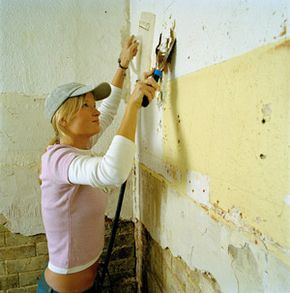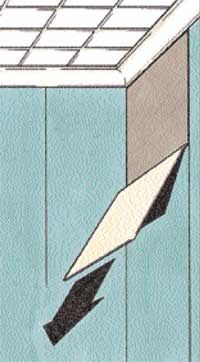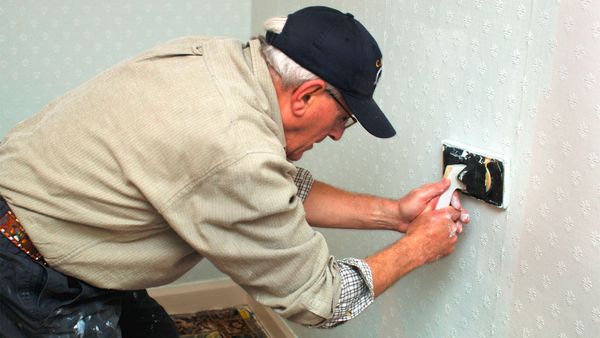To determine if wallpaper removal is a project for you or the pros, consider the type of covering you're working with, the length of the project and the costs involved. There are many kinds of wallpaper and essentially only two kinds of wallpaper backing: Peel-away and non peel-away. The backing determines your options.
To find out which one you have, find a discreet area on the wall and test a small section by gently tearing the wallpaper. If it comes off easily, the paper backing can be dry-stripped, so go ahead and rip away! Typically, newer coverings and those made with vinyl are easy to take down.
If you aren't so lucky, you'll need to dissolve the adhesive that's gluing the wallpaper to the wall. You can dissolve it with wallpaper stripper, which can take several hours to several days, depending on the paper backing, room size, and any complications that arise. Doing it yourself costs less than hiring a professional — you only need to pay for tools and materials. However, hiring an expert can cost less if you're dealing with complications, like drywall that wasn't primed.
Turn to the next page to learn how to make your own remover and find out why this inexpensive alternative can be so effective.


